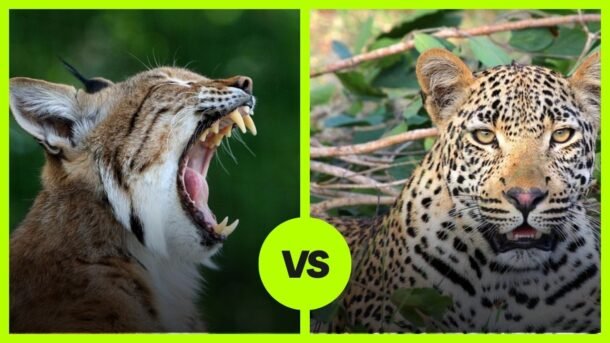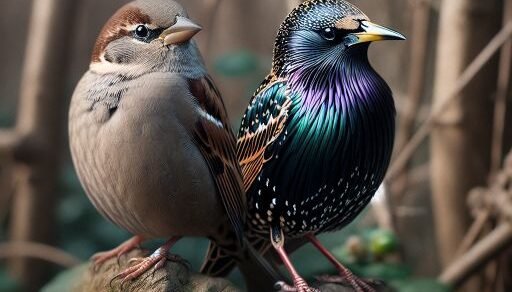The animal kingdom never ceases to fascinate with its diversity, and the world of big cats is no exception. Imagine a bobcat from the forests of North America crossing paths with a leopard from the African savannas. Both are skilled predators, but they differ significantly in size, strength, and natural weaponry. What would happen if these two big cats were to engage in combat? Let’s dive into the intricacies of their individual capabilities, natural behaviors, and fighting strategies to predict the outcome of this hypothetical clash.
Introducing the Competitors
Bobcat: The Compact Predator
The bobcat is a medium-sized feline native to North America. Weighing between 15 to 40 pounds and measuring up to 4 feet in length, bobcats are well-equipped for survival in a range of habitats. Their compact size allows them to climb trees and swim when needed. Armed with sharp retractable claws and powerful jaws, bobcats usually prey on rodents, birds, and occasionally larger animals like deer.
Leopard: The Versatile Stalker
Much larger than the bobcat, the leopard is a formidable predator native to Africa and parts of Asia. Adult leopards can weigh between 90 to 200 pounds and can measure up to 6 feet in length, excluding the tail. Leopards are incredibly strong and agile, with the ability to climb trees effortlessly and swim proficiently. Their diet is varied, consisting of anything from rodents to large ungulates.
Physical Attributes: A Mismatch?
Bobcat’s Agility and Quick Reflexes
Although smaller, the bobcat is nimble and agile, making it a master of ambush tactics. Its keen senses of sight and hearing make it excellent at detecting prey or danger.
Leopard’s Strength and Climbing Skills
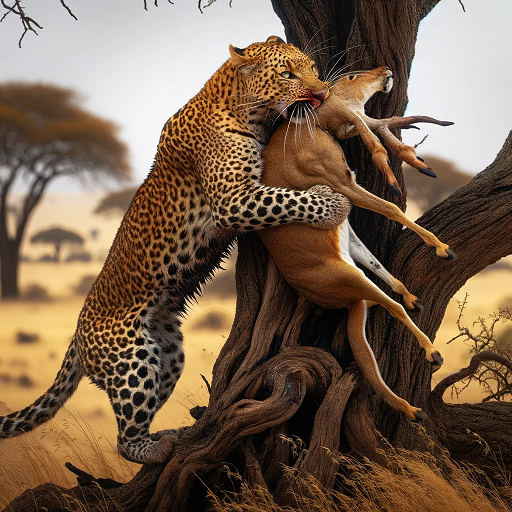
In contrast, the leopard possesses immense strength, especially in its upper body. This enables it to carry prey several times its own weight up trees to avoid scavengers. Its retractable claws are longer and sharper than those of a bobcat, and its powerful jaws can crush bones with ease.
Hunting Strategies and Diet
Bobcat: Adaptability in Hunting
Stealth and Surprise: Bobcats excel in using their environment for concealment. They blend seamlessly into the underbrush or snowy landscapes, making them nearly invisible to their prey. This tactic allows them to get closer without detection.
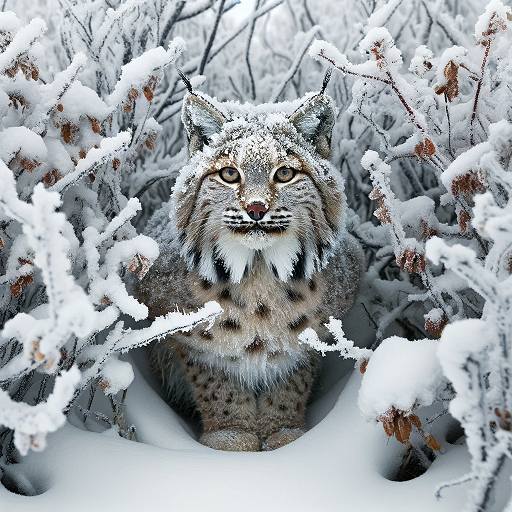
Diverse Diet: Their diet is highly opportunistic, shifting with seasons and prey availability. In winter, they might hunt more birds or scavenge carrion, whereas in warmer months, they actively pursue rodents, rabbits, and other small mammals. Their adaptability in diet reflects their overall survival strategy.
Hunting Technique: Bobcats embody patience and precision. They may spend considerable time observing and tracking their prey before making a calculated strike. This method conserves energy, increasing their success rate in hunting.
Leopard: Opportunistic Predator
Adaptive Diet: Leopards’ dietary flexibility is key to their survival in diverse habitats. From agile monkeys in trees to swift antelopes on the savanna, their prey selection is vast. They have even been known to fish and catch reptiles, showcasing their versatile hunting skills.
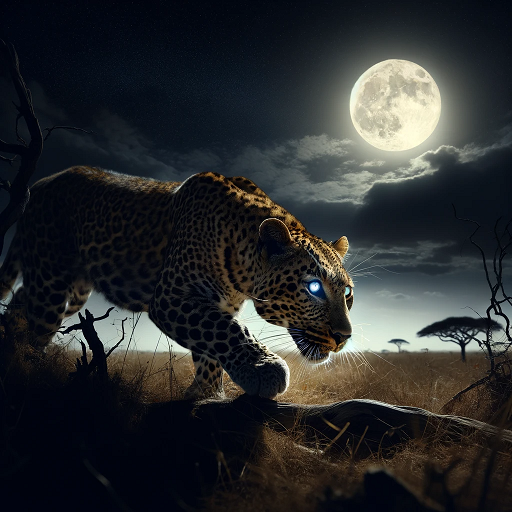
Nighttime Hunting: Their nocturnal habits are aided by exceptional night vision. Leopards move with a ghostly silence, stalking their prey under the cover of darkness, making them one of the most successful nocturnal predators.
Killing Method: The leopard’s killing bite is both precise and powerful, aimed at the most vulnerable parts of its prey. This method ensures a swift kill, minimizing struggle and potential injury to the leopard.
Natural Predators and Preys
Bobcat: Facing Natural Threats
- Predators: Young and smaller bobcats are particularly vulnerable to larger predators. In regions where their habitats overlap with wolves or coyotes, bobcats must be extra vigilant. Birds of prey, like eagles, can also pose a threat to younger or smaller bobcats.
- Prey Vulnerability: Bobcats often exploit the weakness of their prey. They might target young, old, or injured animals, which are easier to catch. Their hunting strategy reflects an understanding of the energy expenditure versus energy gain from their prey.
Leopard: Top of the Food Chain
- Few Natural Enemies: Mature leopards sit near the top of the food chain with few natural threats. However, in ecosystems where they coexist with other large predators like lions or hyenas, competition and conflicts can arise.
- Predatory Versatility: The leopard’s ability to take down prey ranging from small birds to large antelopes exemplifies its place as a top predator. This versatility ensures their survival even in changing environments.
Survival in Hypothetical Fights
Bobcat: Utilizing Environment and Agility
- Tactical Retreats: Bobcats are pragmatic in conflict, choosing to evade rather than engage with larger predators. Their agility and knowledge of the terrain give them an advantage in escaping potentially dangerous encounters.
- Defensive Tactics: When escape isn’t an option, bobcats can be surprisingly fierce. They use their agility, sharp claws, and teeth in a whirlwind of defensive maneuvers, aiming to intimidate or wound enough to escape.
Leopard: Dominance and Strength
- Powerful Combatant: Leopards are among the most formidable fighters in the animal kingdom. They don’t hesitate to defend their territory, cubs, or themselves against other large predators, relying on their raw power and aggression.
- Aggressive Strategy: In a fight, leopards aim to dominate through sheer force. Their strategy revolves around using their weight and strength to overpower their opponents, often aiming for a swift and decisive victory.
The Role of the Environment
Given that these animals are from different continents, the battleground could significantly impact the duel’s outcome. Forested or rocky terrain could benefit the bobcat’s natural agility, while open plains would certainly favor the leopard’s sprinting abilities.
Conclusion: A Seemingly One-Sided Affair
Though both animals are extraordinary predators in their own right, the leopard’s significant advantages in size, strength, and weaponry make this matchup appear one-sided on paper.
Odds of Winning:
- Bobcat: 10%
- Leopard: 90%
The bobcat’s agility and keen senses offer a slim chance for it to outmaneuver the leopard, but the leopard’s superior physical attributes make it the likely victor. In a head-to-head battle, the bobcat would find it extremely challenging to overcome the leopard’s advantages, making the leopard the probable winner in this hypothetical clash of feline predators.
Interesting Facts
Bobcat
- Territorial Markings: Their claw marks on trees serve not only as territorial markers but also as a display of physical prowess, warning other bobcats. Their scent markings further establish their presence in a given area.
- Vocalizations: Bobcats have a surprisingly diverse range of sounds, each serving different purposes like attracting mates, signaling distress, or territorial warnings. During mating season, their calls become more frequent and varied.
Leopard
- Tree Storing: This behavior not only protects their food from scavengers but also indicates their incredible strength, as they can haul prey much heavier than themselves up into the branches.
- Solitary Nature: Leopards are typically lone wanderers, except during mating or when females are nurturing their cubs. This solitary lifestyle is a significant aspect of their survival strategy, as it reduces competition and conflict.
More to read
Leopard vs. Black Bear Read More Grey Wolf vs. Bobcat: Forest Powerhouse Meets Agile Assassin: Read More

